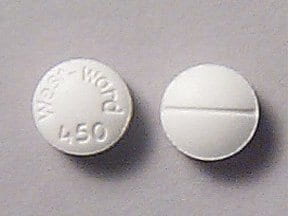What is DDT?
DDT, also known as 1,1,1-Trichloro-2,2-bis(4-chlorophenyl)ethane is an organochlorine insecticide. It has been proven to be useful against many pests and against insects that spread diseases such as yellow fever and malaria. Technical grade DDT is a mixture of numerous isomers. (Casarett & Doull). It was banned from the US in 1972 except in the case of a public health emergency but is still used around the world for malaria (CDC DDT Toxicological Profile).
Biotransformation
After being absorbed, distribution occurs all throughout the body, but mostly in adipose tissue. DDT can be broken down into DDD or DDE, which are stored in fatty tissue. Metabolites can be excreted via the urine and breast milk. (CDC DDT Toxicological Profile)
Below is a diagram describing the metabolic pathway:
Toxicokinetics
DDT is very poorly absorbed through the skin but acute oral toxicity can occur upon ingestion. LD50 values for dermal toxicity are greater than 1000 mg/kg. As mentioned, it is found mostly in adipose tissue. More information can be found here: Casarett & Doull
Carcinogenecity
Studies in animals have shown that DDT can cause cancer in the liver. There have been many studies focusing on the link between DDT exposure and breast cancer, but no clear link has been found. Other investigations include associations between DDT exposure and prostate cancer, testicular cancer, and lymphoma. More information can be found here: CDC DDT Toxicological Profile
Mechanism of Action and Target Organs
One of the ways DDT toxicity occurs is through acting on the central nervous system. It slows the closing of sodium channels after they have opened, increasing excitability of the neuron and making it more likely that repetitive firing will occur. Also, it may inhibit the Ca2+-ATPase, reducing external calcium levels which will lead to more neuronal instability. In addition, DDT can modulate neurotransmitter levels, such as norepinephrine and acetylcholine. (Casarett & Doull)
Important target organs are the liver, nervous system, and reproductive system. DDT and one of its metabolites, DDE, accumulate in fatty tissue and specifically human breast milk (CDC DDT Toxicological Profile).
Below is a picture that illustrates the mechanism:
Signs and Symptoms of Toxicity
- Motor unrest/spontaneous movements
- Convulsions (severe poisoning)
- Dizziness/confusion
Source of information: Casarett & Doull
Historical/Unique Exposures
Back when DDT was widely used, it would accumulate in the environment, causing several toxic effects on the wildlife. This led to its eventual ban in the US. More information can be found here: DDT Fact Sheet.
Treatment
Treatment may involve acting on the central nervous system. Some medications include phenytoin, diazepam, and phenobarbital (Casarett & Doull).
Biomarkers
DDT and its metabolites are analyzed in blood, feces, urine, breast milk, and adipose tissue. Changes in levels of vitamin A in the plasma may correlate to DDT exposure (CDC DDT Toxicological Profile).

https://www.everydayhealth.com/alzheimers-disease/alzheimers-blood-biomarkers-could-change-diagnosis-treatment-disease/







